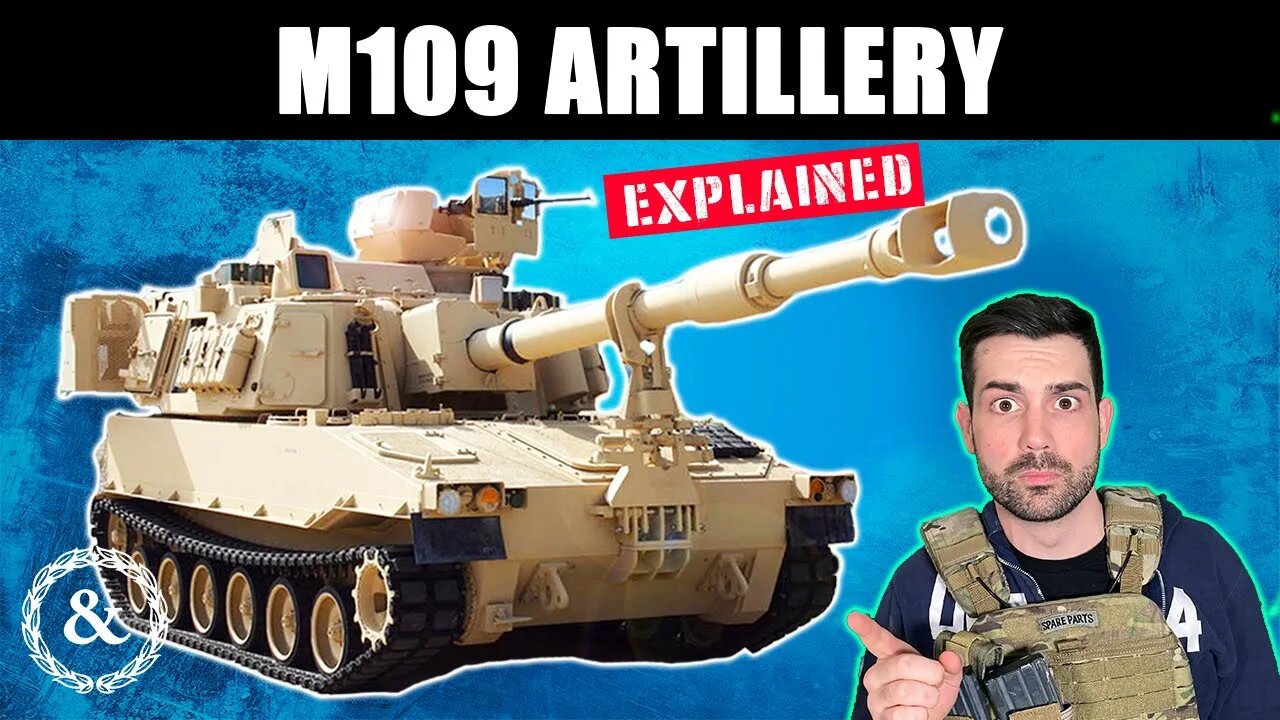Premium Only Content

M109 Self Propelled Artillery Vehicle Tactics Explained
M109 is the American military's king of battle; it's a highly protected fast moving mobile 155mm yeet machine. But it’s been around since 1963 at this point and some military analysts believe it’s fast becoming obsolete So where did the self propelled M109 artillery vehicle come from and what are some of the tactics and procedures they’ve used over the years? Better yet can it lower its cannon down 45 degrees so it can be used like a tank with a massive cannon?
Follow Cappy: https://www.instagram.com/cappyarmy
Written by: Chris Cappy and Andrew Tucker
Edited by: Kyle
In World War I we first saw the rise of tank warfare. I can picture the military designer Walter Gordon Wilson sitting there in 1917 looking at the new armored tanks then looking at static cannon artillery pieces, then looking back at the tank. The gears in his head are slowly turning as he has an epiphany and puts two and two together.
The howitzer uses a main gun that fires a 155mm shell with a separate bagged charge. It is powered by a diesel engine and has a secondary M2 50 Cal machine gun. The M109 weighs 27 tons which is actually relatively light weight for an armored tank. They sacrifice some armor to keep it mobile since its not meant as a direct combat vehicle. It has a max rate of fire at 6 rounds per minute if you’re really gunning and a sustained realistic rate of fire of 3 rounds per minute.
This is a terrain denial weapon. It can be used to create dead zones in a battlespace. For instance instead of having to place a whole infantry company of over 100 soldiers to guard a border you can put a platoon of four M109 artillery pieces there. The self propelled artillery vehicles need even less soldiers than fixed artillery positions which require 9 soldiers.
#ARTILLERY #CANNON #MILITARY
-
 23:50
23:50
Task & Purpose
1 year ago $0.07 earnedThe Most Dangerous Group You Never Learned About
1.05K5 -
 15:05
15:05
The Pascal Show
9 hours ago $0.01 earnedHOLY SH*T! The Missing Minute From Epstein’s Jail Video Has Been FOUND
52 -
 LIVE
LIVE
Lofi Girl
2 years agoSynthwave Radio 🌌 - beats to chill/game to
196 watching -
 2:14:32
2:14:32
Inverted World Live
7 hours agoHarvard Astronomer Says Hostile Alien Spaceship Heading Toward Earth | Ep. 82
184K47 -
 2:29:34
2:29:34
Brandon Gentile
4 days agoHow To Retire 10 Years Early with Just 0.1 Bitcoin
3.83K2 -
 3:19:34
3:19:34
Laura Loomer
6 hours agoEP135: Champagne Communism: Zohran Mamdani's Ugandan Compound EXPOSED
36.4K8 -
 28:39
28:39
The Why Files
3 days agoCryptids Vol. 4 | Bunyips, Yowie and Australian Nightmare Fuel
50.4K38 -
 1:07:06
1:07:06
Mike Rowe
18 days agoThe Fight For America's Heartland | Salena Zito #442 | The Way I Heard It
35.4K48 -
 2:43:30
2:43:30
TimcastIRL
7 hours agoSouth Park Goes FULL CHARLIE KIRK, Latest Episode ROASTS Trump Again | Timcast IRL
218K111 -
 DVR
DVR
SpartakusLIVE
7 hours agoThe Return of the KING of Content
51K